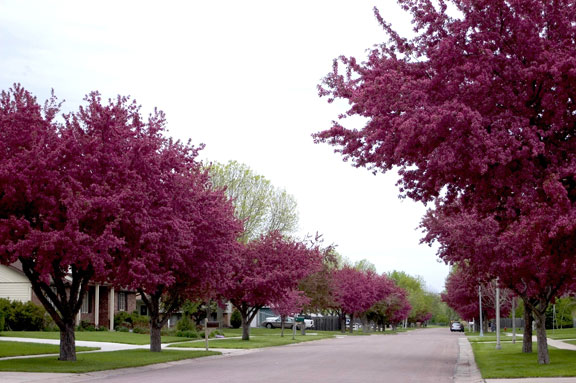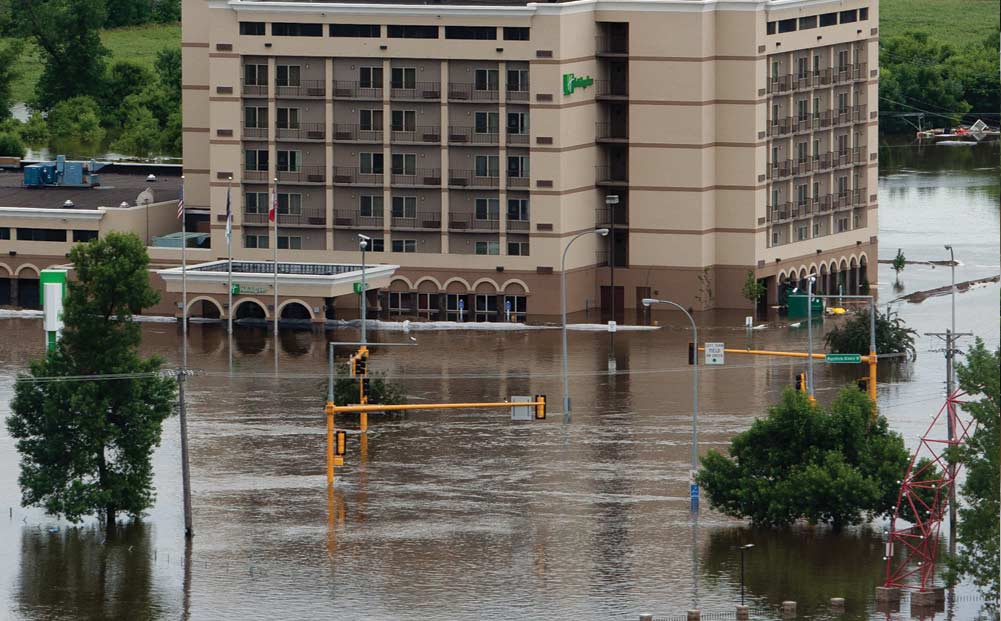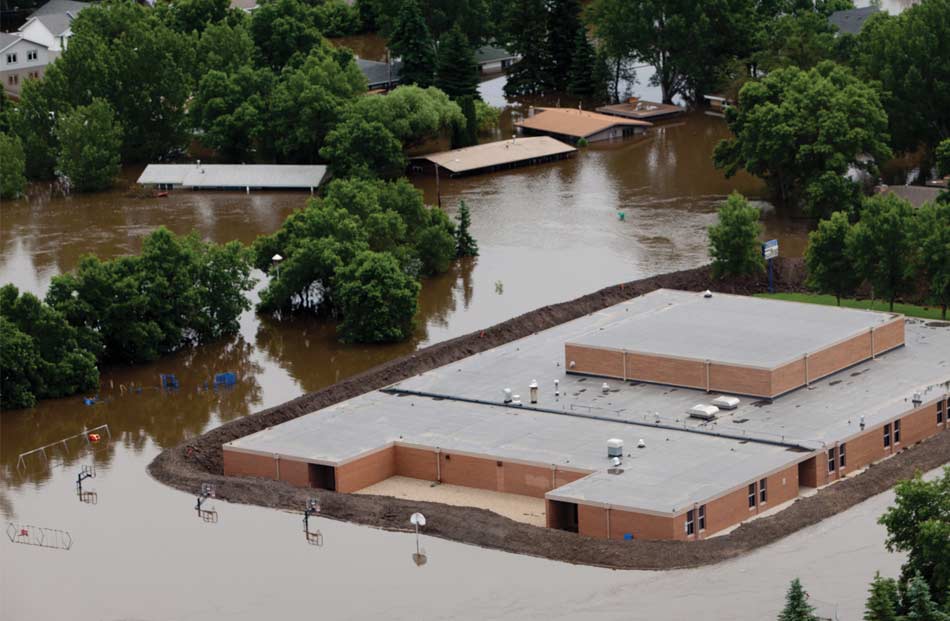The official first day of spring, according to the calendar, falls on March 20 or 21. This is called the Vernal Equinox• March 20 or 21
• First day of spring At this time, the rays of the sun are at the same angle that they were during the Autumnal Equinox. However, the ground is still cold from winter, often with a snow cover, so it is much colder than it is during the Autumnal Equinox.

Figure 89. Spring in North Dakota: Flowering crabapple trees line city streets. (City of Fargo)
Even though the calendar might say spring has arrived, the month of March may have very unpredictable weather as the seasons are changing from winter to spring. Warm air masses are moving in from the south bringing spring-like temperatures some days, but cold air masses may still sweep down from the Arctic with bitterly cold temperatures. The colliding of warm and cold air masses can turn snowstorms into raging blizzards.
As March days get longer, the average temperature goes up. March often has foggy days, especially in the mornings. As warm, moist air arrives, the cold ground causes the moist air to be cooled, and fog is formed.
Late March is sometimes the time when precipitation turns from snow to rain, but usually the first heavy rains of spring come in early April. Rainfall amounts continue to get heavier as spring goes on.

Figure 90. Minot Flood, 2011. Spring can also be a time of too much water, flooding, and disaster. (FEMA)

Figure 91. Minot Flood, 2011. This major flood caused millions in damage to the city of Minot. (FEMA)
April is the month when the fastest warming occurs. On the average, April temperatures are close to 20 degrees warmer than those in March. During the day, it is usually above freezing in April, but freezing temperatures at night are still common. The last freezing temperatures of the season occur about the middle of May.
April is also the windiest month in North Dakota, followed by May. The average speed of the wind in April is almost 13 miles per hour.
When a winter has heavy snowfall, the spring melt-water can fill up rivers and cause them to overflow their banks. Sometimes ice gets jammed up in a river at the same time and acts like a dam, blocking the flow of the river so that the water is forced out of its banks.
In 2011, serious flooding happened along the Mouse River. Many people in the city of Minot and other towns had record flood damage that year. More than 10,000 people were evacuated from their homes.
During the spring of 1997, after a winter of over 100 inches of snow, people who lived along the Red River were especially hard hit when the river flooded hundreds of homes. The entire city of Grand Forks had to be evacuated because of the flood.
Spring in North Dakota brings many changes: temperatures rise and snow melts; trees start budding; green grass appears; migrating birds return from their winter retreats; and farmers start working in the fields. Summer is just around the corner.

Figure 92. Grand Forks Flood, 1997. Flood waters swamped much of the city. (ND Water Commission)


